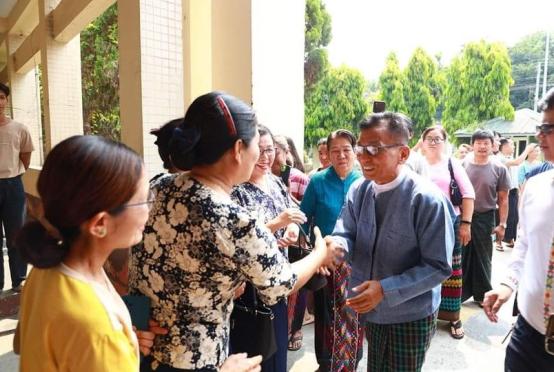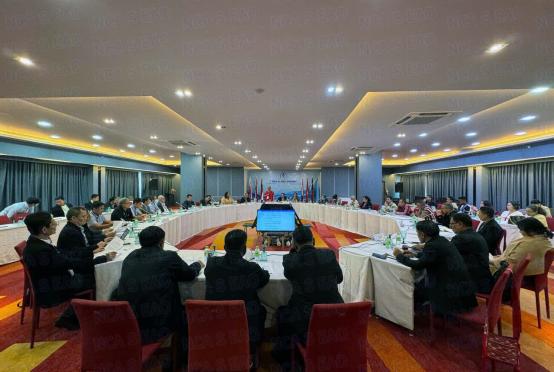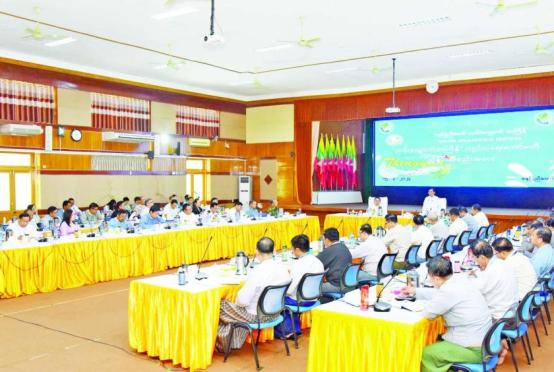
MANILA, Philippines–Malacañang on Friday said the government was doing its best for the release of the hostages held by the Abu Sayyaf without paying any ransom, despite the bandit group’s recent threat to behead them.
Presidential spokesperson Salvador Panelo stressed that the government never paid ransoms and would not give in to the bandits’ demands.
“We are doing our best to secure the release of the hostages—one Malaysian and two Indonesians—from the evil hands of the Abu Sayyaf, but we stand firm on our no ransom policy,” Panelo said.
He issued the statement after a video, which shows Abu Sayyaf members threatening to behead their foreign captives, was uploaded on social media on Feb. 14.
One of the hostages appealed to the Indonesian government to help secure their freedom. As he spoke, a bandit held a knife to his neck.
The hostages were abducted from a Sandakan-based fishing trawler off Tawi-Tawi on Dec. 5.
“To give in to the demands of terrorists and other lawless groups would embolden them to engage in more abductions. That would allow them to conduct extremist and other criminal activities as they could buy more arms and weapons,” Panelo said.
President Duterte, he said, has already ordered the military to crush the Abu Sayyaf and other terrorist groups in Mindanao.
Unknown militant rises
Amid the loss of leaders, an unknown Abu Sayyaf militant has risen to head the Islamic State (IS) group in Mindanao.
But unlike many of his slain comrades, Hatib Hajan Sawadjaan lacks the bravado, clan name or foreign training.
Not much is known about Sawadjaan, or if his group held the three hostages, but the attacks attributed to him are savage.
He is accused of plotting the deadly Jan. 27 bombing of the Our Lady of Mount Carmel Cathedral in Jolo, which authorities say was a suicide attack by an Indonesian militant couple.
The attack, which killed 23 people and wounded about 100 others, and another suicide bombing in Basilan province in July last year that officials said he masterminded, put Sawadjaan in the crosshairs of the US-led campaign against terrorism.
A recent US Department of Defense report to Congress said that it believed Sawadjaan was the “acting emir” in the Philippines of the IS group.
IS ‘emir’ in Philippines
Interior Secretary Eduardo Año, however, said intelligence indicated that Sawadjaan, who is in his 60s, was installed as IS chief in a ceremony last year.
His turn at the helm came after the Abu Sayyaf took its biggest battle loss in 2017 when several commanders were killed as troops quelled a five-month siege by militants in Marawi City.
Among those killed was Isnilon Hapilon, the first IS-designated leader in the Philippines.
“I think Sawadjaan rose in rank because of seniority and there were no other leaders left,” said Año, the former military chief who oversaw the Marawi offensives, told The Associated Press (AP) in an interview.
He estimated that Sawadjaan, who only likely finished grade school, commanded about 200 combatants and followers.
overty drove him to work as a lumberjack in Patikul, where he married a woman from Tanum, where he would base his Abu Sayyaf faction years later, a military officer, who has closely monitored the Abu Sayyaf, told AP on condition of anonymity.
As an elderly villager, he served as a mosque preacher, earning him the religious sobriquet “hatib,” the officer said.
Sawadjaan first took up arms as a member of the Moro National Liberation Front (MNLF). His commander was Radulan Sahiron, the one-armed bandit who broke away from the MNLF in 1992. They joined the Abu Sayyaf, which had just been organized by Abdurajak Abubakar Janjalani, said MNLF leader Yusop Jikiri.
Sawadjaan would later part ways with Sahiron, including over Sahiron’s refusal to accommodate foreign militants for fear they are a magnet for military air strikes, said Abu Jihad, a former militant who has met Sawadjaan and was captured by troops.
Implicated in kidnappings
When Abu Sayyaf men kidnapped an American Muslim convert, Jeffrey Schilling, for ransom in August 2000, Sawadjaan helped gather bamboos that were used to build huts for the militants, Abu Jihad said.
Sawadjaan’s daughter married a Malaysian militant known as Amin Baco, who has IS connections, police said.
Sawadjaan would later be implicated in the kidnappings of a German couple, two Canadian men, Schilling and a Jordanian journalist, Baker Atyani. The Canadian men were separately beheaded on video, according to military and police officials. —WITH A REPORT FROM AP
https://newsinfo.inquirer.net/1089061/no-ransom-despite-abu-sayyaf-threa...















